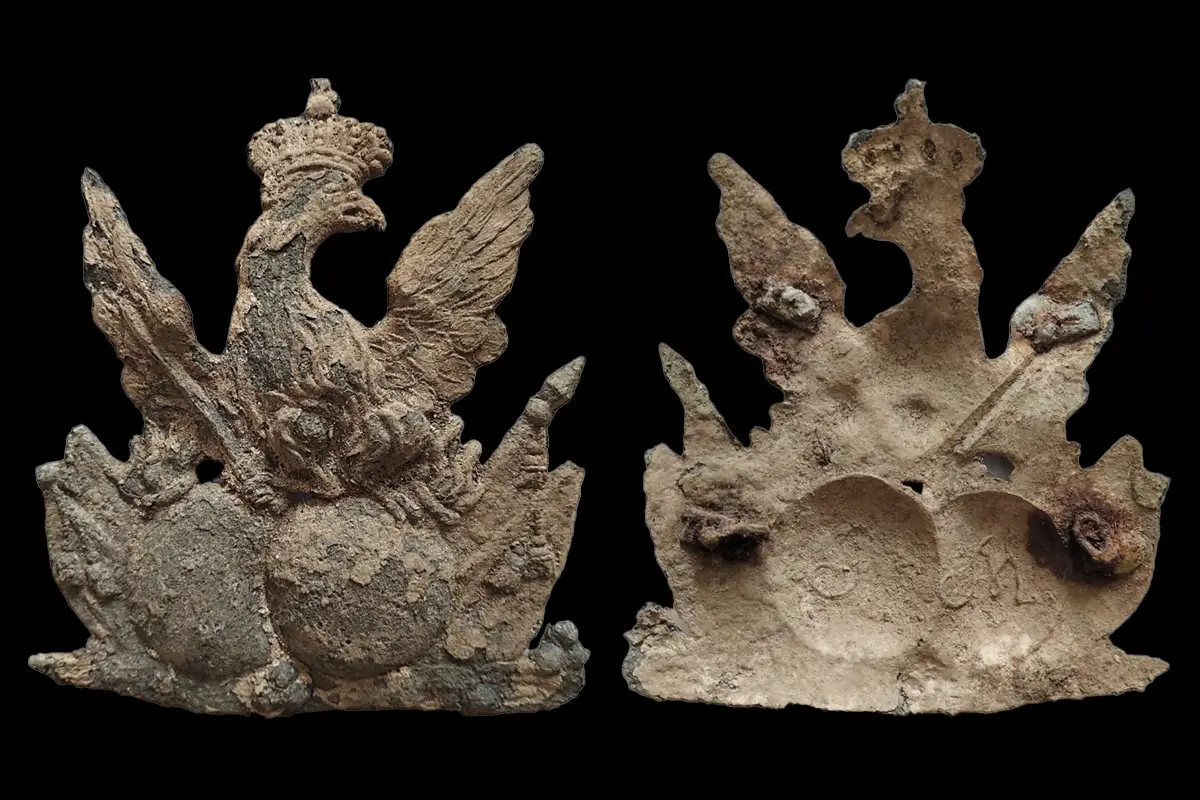A metal detecting survey in the Chełm Forest District, Poland, has resulted in the discovery of a mysterious brass eagle badge.
The eagle is shown grasping a sword while wearing a closed crown. It is seated on a panoply of two artillery cannon in the centre, flanked by four flags on either side, and two pyramids of three musket balls. Measuring 15 by 19 cm’s, the eagle has what appears to be initials, possible “S” and “M” on the reverse side.
It was discovered among preserved metal fragments from a hat known as a shako, a cylindrical military cap used by European army regiments mainly during the 19th and 20th centuries.
According to experts, no direct analogues have been found with the artefact, making it difficult to determine its precise date and origin.
Based on the design and method of attachments, Prof. Trąbski told the Lublin Voivodeship Conservator of Monuments that it might belong to an infantry soldier of the Crown Army, dating to around 1791–1794.
This would suggest that the eagle badge was made during the final years of the Polish–Lithuanian Commonwealth, which was ended by the Third Partition of Poland in 1795.
According to Prof. Trąbski, eagles first began to appear on Polish military shako with the introduction of new uniform regulations in 1791. To date, only five eagle type badges have survived from this period, which share similar features such as the eagle’s head turned left, body angled to the right, unevenly spread wings, and the right claw clutching an object.
“Importantly, the find site is located near the historical military route from Chełm to Lublin, a path used during both the 1792 war in defence of the Constitution of May 3rd and the Kościuszko Uprising of 1794. It is plausible that this artefact is directly linked to one of these historic events,” said the Lublin Voivodeship Conservator of Monuments.
Header Image Credit : Lublin Voivodeship Conservator of Monuments
Sources : Lublin Voivodeship Conservator of Monuments





